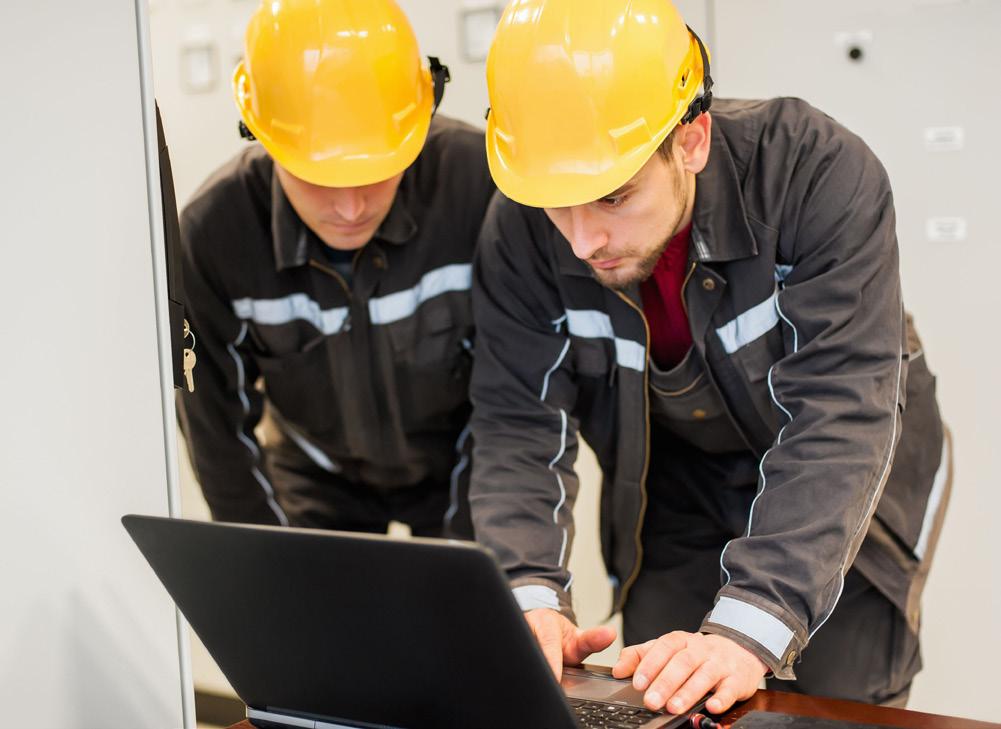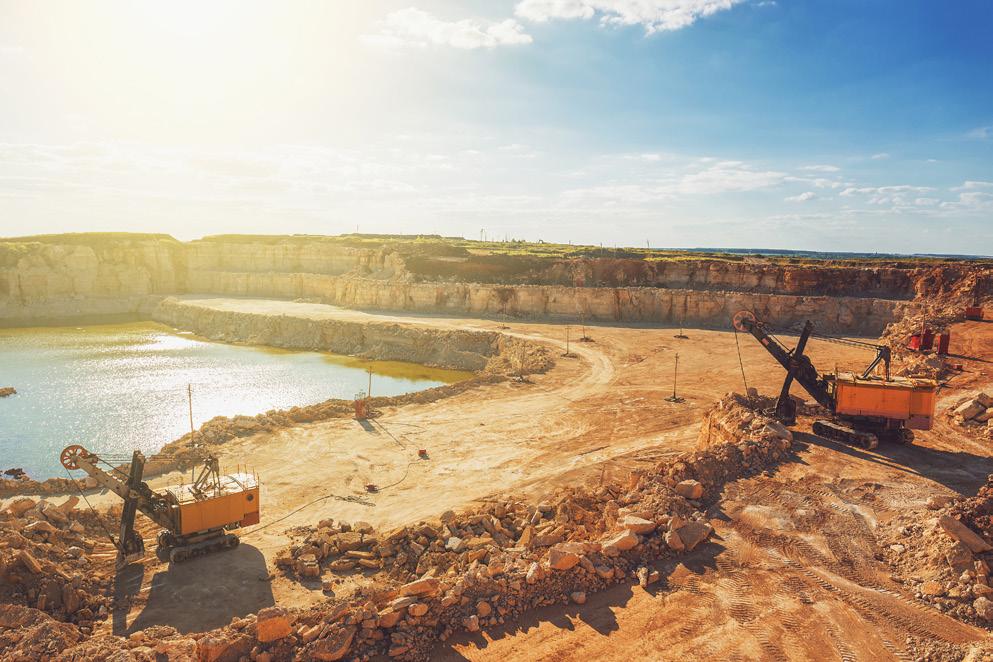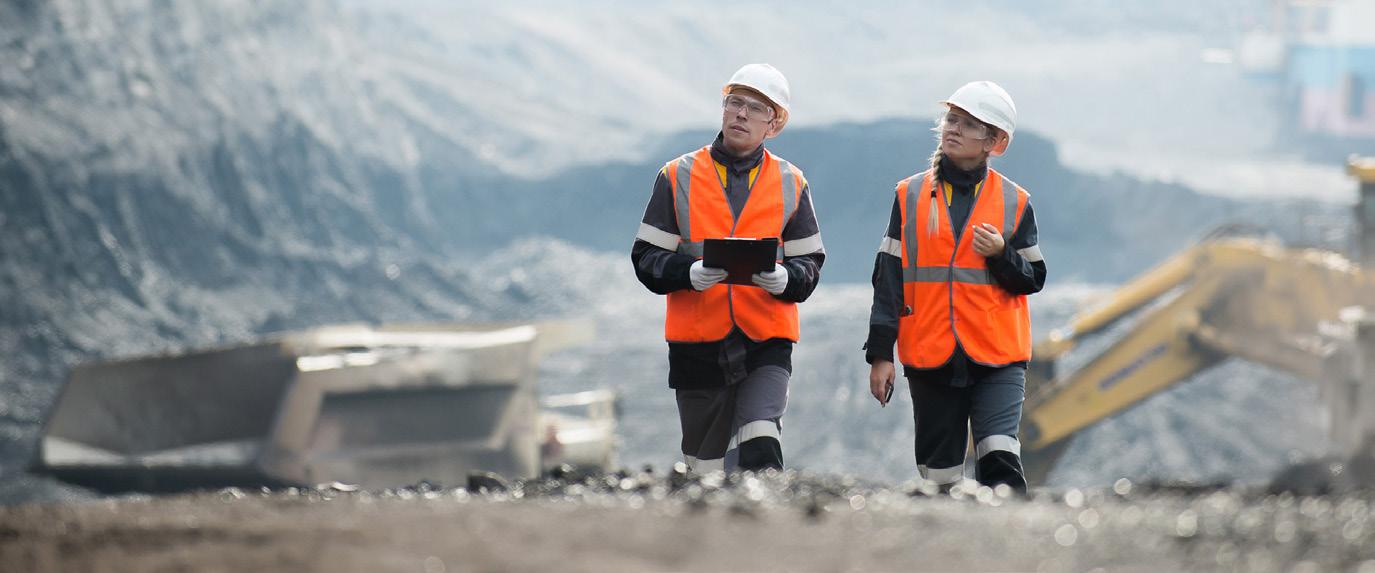
7 minute read
Remote No More
John Geasa, Speedcast, USA, evaluates how the Internet of Things and connectivity are changing modern mining.
While the majority of mines remain physically remote, vastly improved communications, coupled with ever-increasing digitalisation of processes and devices, means that the modern mine of today is far from remote. It is, in fact, quite the reverse; a closely connected network of devices and automated processes, much of which takes place offsite. Three things have combined to facilitate this: the Internet of Things (IoT), significant improvements in broadband connectivity, and cloud processing.
Mining is a very competitive business. Resources are finite and companies are being forced to mine deeper and in more remote locations. The industry is quickly realising how IoT can be used for competitive advantage. Research conducted by market research firm, Vanson Bourne, found that only 2% of
mines worldwide had fully implemented at least one IoT project.1 When this research was repeated just two years later in 2020, the figure had risen to 65%.2 This research was corroborated by other research carried out by GlobalData at the beginning of this year, which showed overall investment in new technology for mining continues to grow, with almost every application showing increased investment compared to two years ago. Investment is particularly high for communication systems and networks with over 60% of mines either making ‘considerable investment’ in, or having fully implemented new systems.3

Figure 1. 65% of mines worldwide had fully implemented at least one IoT project in 2020.

Drivers and benefits
Figure 2. Mines are often physically remote, but ever-increasing digitalisation means the modern mine is more connected than ever.
There is no one thing that drives a mine owner to embrace IoT, upgraded processes, and communication networks. Motivators, like benefits, are multiple. Indeed, research from Vanson Bourne has revealed a long list of benefits already achieved or expected to be attained. Topping the list was “improved health and safety of staff.” Given the intrinsically hazardous nature of mining, it is not surprising that this is one of the key drivers, and benefits, of the digitalisation of mines. IoT contributes to this in several ways. For example, data from cameras and sensors can be used for remote detonation, removing the need for miners to be in close proximity to a blast. Furthermore, wearable technology, which monitors biometric and environmental data, can be combined with proximity sensors to provide alerts when workers are in danger from changes in the environment, such as rising gas levels or a change in the stability of the rock face. Other attained or expected benefits mentioned by over 90% of respondents in the Vanson Bourne report include improvements in productivity, processing throughput, reduced costs, and better return on investment (ROI).2 These are all intertwined. Even improvements in health and safety contribute to cost reduction. Fewer accidents mean improved productivity, as well as adherence to safety standards. An additional benefit is that the improved processes also lead to better fuel consumption and reduced emissions; reducing the environmental impact of mining and helping companies meet their environmental, social, and governance (ESG) goals. There are multiple other ways that IoT contributes to the bottom line to improve a company’s competitiveness. Real-time information is used to facilitate automated or remote operation of vehicles and equipment, geofencing and to deliver an immediate response to a problem, reducing the need for skilled workers to be on site. In addition, and very importantly, data from all the different sensors, cameras, drones, and monitoring equipment is combined and processed in a public or private cloud, utilising augmented intelligence (AI) and machine learning (ML) to provide valuable insights into the conditions at a site. External data, such as weather forecasts and maintenance procedures from equipment manufacturers, can also be incorporated, as well as data from other similar mines. From this, a mine owner will learn the best time for preventative maintenance of equipment and vehicles, reducing failures and downtime. Equally, if not more importantly, the mine Figure 3. The benefits of digitalisation in the mining industry are vast. owner will have far greater

visibility into the conditions at a site, enabling them to pinpoint the ideal time and place to start mining, to determine the optimal location for blasting and to identify changing conditions in time to prevent problems, such as: erosion, flooding, and even the collapse of an unstable shaft.
The more data that an owner can access, the faster decisions can be made that will lead to both increased margins and improved working conditions. While many mines are investing in digitalisation and automation, very few are fully automated. Resolute Mining in Mali is a good example of where a mining company has embraced full automation for operations: the entire production operation – drilling, charging, blasting, loading, and trucking – is carried out via an autonomous system. This has reduced the cost of gold production by US$135/oz and cut mining costs by 30%.4
Connectivity
The backbone of these remote site IoT and XYZ systems is a comprehensive managed connectivity solution, delivering the critical applications that enable ABC. Reliable connectivity is the key to successful implementation. To achieve this, there are two stages. Firstly, there has to be a robust wireless network on site. Historically, this has often been Wi-Fi or 3G, both of which have now largely been superseded by private LTE networks. LTE offers several advantages: it provides more bandwidth than 3G, it is a more stable network, and it provides wider and deeper inside coverage than Wi-Fi. Private 5G networks are now also being installed in some mines. As the amount of data generated on site increases, so too will the necessity for 5G. It offers significantly greater bandwidth than LTE and provides lower latency, which is essential for real-time connectivity for remote vehicle and machine operation.
Secondly, there has to be a reliable broadband connection that seamlessly interconnects with the local network, in order to move all this data offsite. Since the majority of mines are in remote locations, satellite is the technology of choice for this part of the hybrid network. 85% of mines that have successfully implemented at least one IoT project use satellite for data transport between the site and the control centre.2 A few have been able to install a fibre connection, but even that depends on satellite for backup.
Historically, geostationary satellites (GEOs) were the only option. GEOs are positioned 36 000 km from the earth, so latency is introduced. For much of the data, this is not an issue, but there are always exceptions. And, as two-way video, remote operation of vehicles and machinery and offsite problem resolution become more common, the need for virtual real-time communications will increase. That is why it is important to have a partner that, amongst other things, can offer multi-orbit connectivity. Medium earth orbit satellites (MEOs) operate closer to earth than their GEO counterparts, providing fibre-like speeds and latency. Low earth orbit satellites (LEOs) are located even closer to the earth. Mine owners are already starting to take advantage of these newer, non-geosynchronous constellations and capabilities. In Western Australia, for example, an iron mine’s existing GEO connectivity was supplemented with a MEO constellation. This enabled the site to meet its increasing need for real-time data, to optimise its operations, and also to support the welfare of more than 300 staff with voice, data, and video services.5
Multi-orbit connectivity is important and will become even more so in the next few years. However, there is more to the hybrid network than satellite orbits. Multi-frequency is also a key factor, and a communications partner should be able to provide access to C, Ku, Ka, and L-Band. Seamless integration to other technologies, including MPLS, LTE, Wi-Fi, 5G and microwave, should also be expected. The network must be flexible enough to handle occasional low data-rate transmissions as well as two-way HD video, and to assign appropriate traffic priorities and routing. It must also be scaleable so that as the volume of data from a site changes, it can effortlessly scale up or down as needed.
Fully managed networks
To realise digital transformation benefits and accelerate remote mine operations, a single-threaded connectivity solution alone is not sufficient. A fully managed, end-to-end service must be leveraged for optimisation of operations – one that includes multi-mode terminals that seamlessly interface with all communication modalities. Any service used must be intelligent and flexible to allow the automatic switching of data to the most cost-efficient path when required, while a cloud-based solution will help to process large amounts of data and allow access from anywhere. Reliability is of course essential, so any system implemented must guarantee at least 99.95% availability.
Thanks to the ability of satellite communications to deliver at-home levels of connectivity to even the remotest of locations seamlessly, the digital revolution of mining becomes more of a reality with every passing day.
References
1. ‘Research Programme Mining 2018: Mining’, Inmarsat, www.inmarsat.com/en/insights/enterprise/2018/researchprogramme-2018-mining.html 2. ‘The Rise of IoT in Mining’, Inmarsat Research Programme, (2020), www.inmarsat.com/content/dam/inmarsat/corporate/ documents/enterprise/insights/Inmarsat_WP_The_Rise_of_IoT_ in_Mining.pdf.coredownload.inline.pdf 3. ‘Technology adoption rates: results of surveys of global minesites’, GlobalData, (March 2022), www.mining-technology. com/wp-content/uploads/sites/19/2022/03/Global-Mine-Site-
Technology-Adoption-Rates-2022.pdf 4. ‘Mind Over Matter: The Not-Too-Distant Future of Autonomous
Operations’, Accenture, (March 2020), www.accenture.com/_ acnmedia/PDF-120/Accenture-Autonomou-Operations-Mining-
Report.pdf#zoom=40 5. 'Speedcast Delivers Connectivity to Mining Site in Western
Australia for Leading Iron Ore Producer’, Speedcast, (2019), www.speedcast.com/newsroom/press-releases/2019/speedcastdelivers-connectivity-to-mining-site-in-western-australia-forleading-iron-ore-producer-2/










